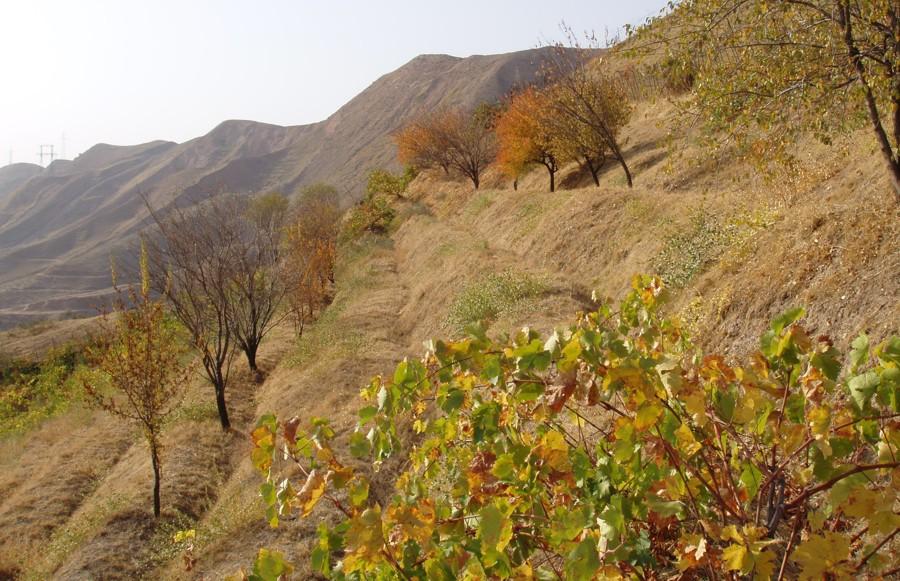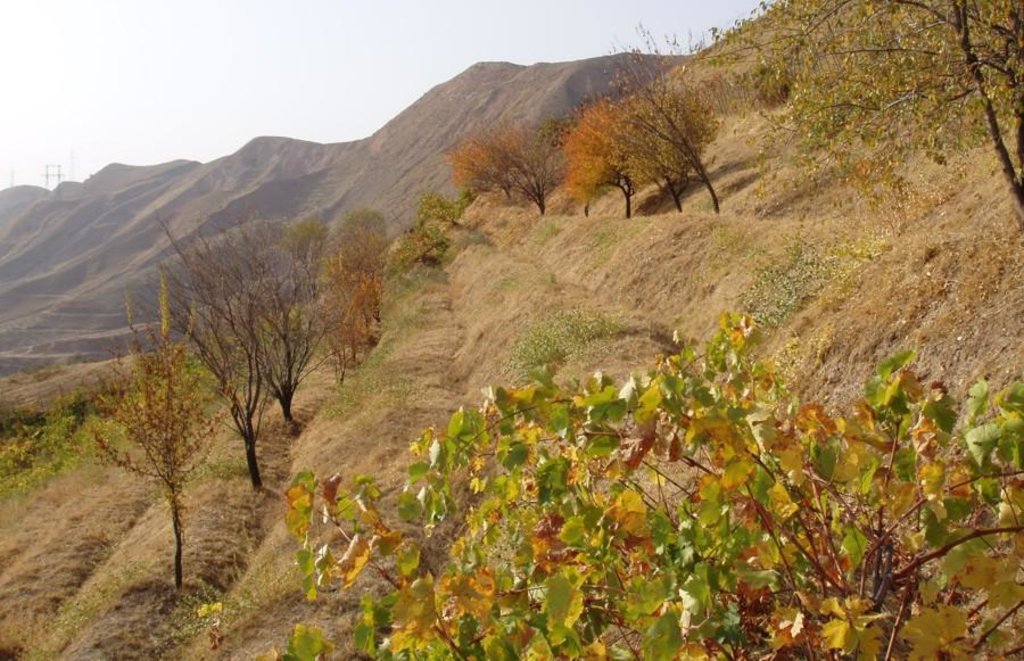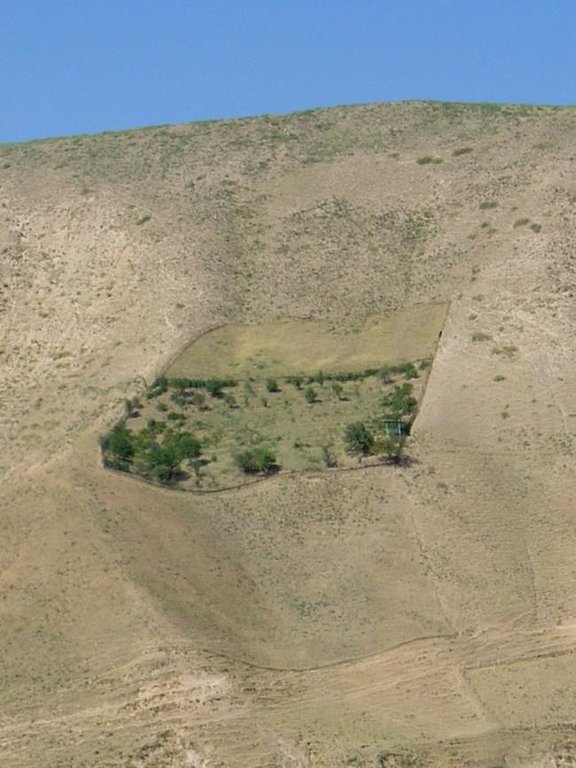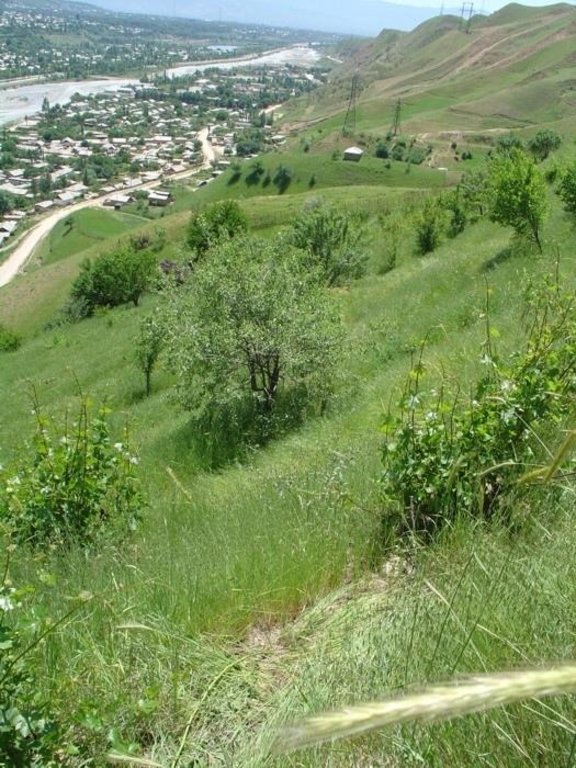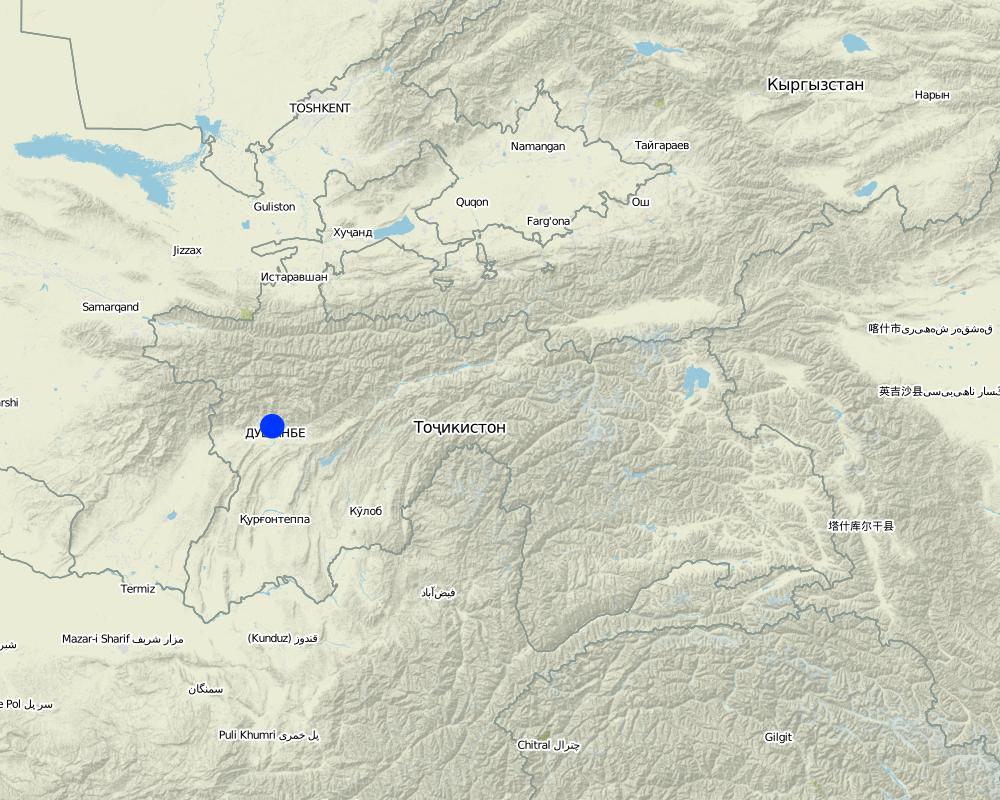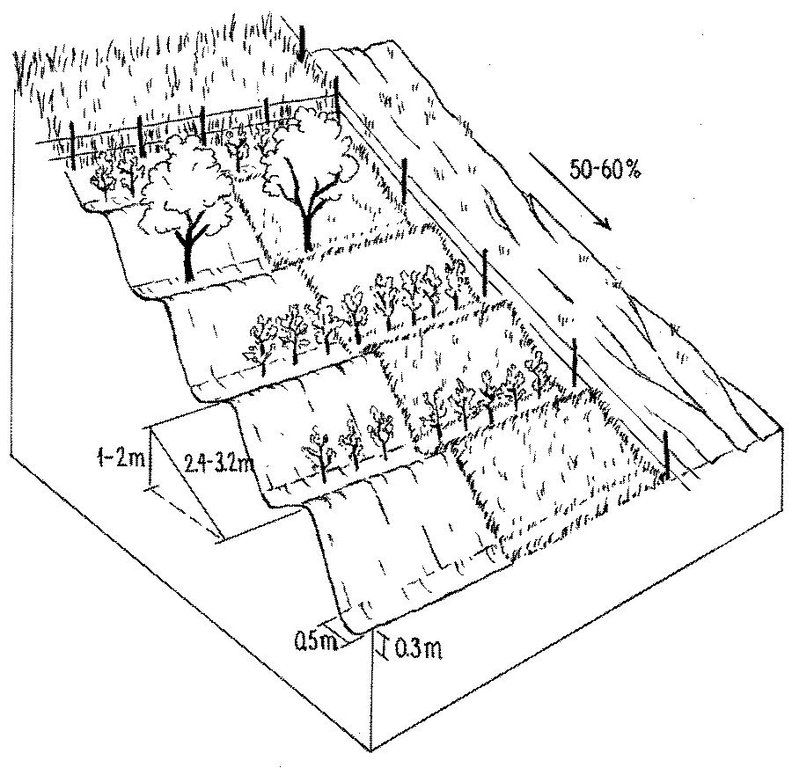Conversion of grazing land to fruit and fodder plots [Tayikistán]
- Creación:
- Actualización:
- Compilador: Loes Masselink
- Editor: –
- Revisores: David Streiff, Alexandra Gavilano
technologies_977 - Tayikistán
- Resumen completo en PDF
- Resumen completo en PDF para imprimir
- Resumen completo en el navegador
- Resumen completo (sin formato)
- Conversion of grazing land to fruit and fodder plots: 20 de agosto de 2019 (inactive)
- Conversion of grazing land to fruit and fodder plots: 2 de noviembre de 2021 (public)
- Conversion of grazing land to fruit and fodder plots: 4 de abril de 2018 (inactive)
- Conversion of grazing land to fruit and fodder plots: 19 de julio de 2017 (inactive)
- Conversion of grazing land to fruit and fodder plots: 17 de julio de 2017 (inactive)
- Conversion of grazing land to fruit and fodder plots: 10 de marzo de 2017 (inactive)
Visualizar secciones
Expandir todo Colapsar todos1. Información general
1.2 Detalles de contacto de las personas de referencia e instituciones involucradas en la evaluación y la documentación de la Tecnología
Especialista MST:
Especialista MST:
Nombre de la(s) institución(es) que facilitaron la documentación/ evaluación de la Tecnología (si fuera relevante)
Soil Science Institute (Soil Science Institute) - TayikistánNombre de la(s) institución(es) que facilitaron la documentación/ evaluación de la Tecnología (si fuera relevante)
CDE Centre for Development and Environment (CDE Centre for Development and Environment) - SuizaNombre de la(s) institución(es) que facilitaron la documentación/ evaluación de la Tecnología (si fuera relevante)
NCCR North-South (NCCR North-South) - Kirguistán1.3 Condiciones referidas al uso de datos documentados mediante WOCAT
¿Cuándo se compilaron los datos (en el campo)?
01/06/2004
El compilador y la/s persona(s) de referencia claves aceptan las condiciones acerca del uso de los datos documentados mediante WOCAT:
Sí
1.5 Referencia al (los) Cuestionario(s) de Enfoques MST
2. Descripción de la Tecnología MST
2.1 Breve descripción de la Tecnología
Definición de la Tecnología:
Fencing part of an overgrazed hillside, combined with terracing, manuring and supplementary irrigation for grape, fruit and grass production.
2.2 Descripción detallada de la Tecnología
Descripción:
In the Varzob valley of Tajikistan, slopes of around 30% are used communally, and are heavily overgrazed. This has led to a reduction in vegetation cover, to soil compaction, and to severe sheet and rill erosion. In 1982, one innovative land user began to set up half a hectare vineyard/fruit plot with intensive grass/fodder production for cut-and-carry and also a separate section above for hay making - by his own initiative. By the application of various conservation measures, within five years an area exposed to severe water erosion was converted into an area of sustainable use. Fodder and fruits are now flourishing and the natural resources of soil and water are conserved more effectively.
Purpose of the Technology: The start of the process was fencing of the plot to keep out animals. Scrap metal and other materials from a machinery depot were used to build a 1.5 m high fence. To harvest and hold runoff water from the hillside for grapes and fruit trees, narrow backsloping terraces were constructed, each with a water retention ditch along the contour. During the initial phase, the terraces did not harvest enough water for establishment of the seedlings. So water for supplementary irrigation was carried to the plot by donkeys in old inner tubes from car tyres. Manure is applied to the plot to improve soil fertility. The manure is collected on the high pastures where the herders graze their animals during summer. The total amount of manure applied to the plot so far amounts to about 3 t/ha over 20 years.
Establishment / maintenance activities and inputs: The establishment of such a plot is very demanding in terms of manpower. However within 5-6 years the system becomes self-sustaining and the productivity of the land is improved several times over. Following this positive experience, other households in the area have adopted the technology spontaneously, and today about 15 ha of degraded grazing land in the Varzob valley have been converted into productive fruit gardens.
Natural / human environment: For the innovator, his most valuable fruits are grapes, followed by apricots, almonds and plums. He has also successfully grown mulberry, pomegranate and cherry trees. Not all the seedlings survive: the farmer considers a 40% survival rate of grape vines to be reasonable. The fruit harvest is mainly used for home consumption. However, in a good year the table grapes and apricots are sold on the market. The hay harvest, from naturally regenerated grasses and fodder plants between the fruits amounts on average to 0.2 t/ha/year. The pruned branches from the vines are collected and used as firewood.
The establishment of such a plot is very demanding in terms of manpower. However within 5-6 years the system becomes self-sustaining and the productivity of the land is improved several times over. Following this positive experience, other households in the area have adopted the technology spontaneously, and today about 15 ha of degraded grazing land in the Varzob valley have been converted into productive fruit gardens.
2.3 Fotografías de la Tecnología
2.5 País/ región/ lugares donde la Tecnología fue aplicada y que se hallan comprendidos por esta evaluación
País:
Tayikistán
Región/ Estado/ Provincia:
Tajikistan
Especifique más el lugar :
Varzob
Map
×2.6 Fecha de la implementación
Si no se conoce el año preciso, indique la fecha aproximada:
- 10-50 años atrás
2.7 Introducción de la Tecnología
Especifique cómo se introdujo la Tecnología:
- mediante la innovación de usuarios de tierras
3. Clasificación de la Tecnología MST
3.1 Propósito(s) principal(es) de la Tecnología MST
- mejorar la producción
- reducir, prevenir, restaurar la degradación del suelo
3.2 Tipo(s) actuales de uso de la tierra donde se aplica la Tecnología

Cultivos asociados (cultivos/ pastoreo/ árboles), incl. agroforestería
- Agro-silvopastoralismo
Principales productos/ servicios:
major food crop: grapes, apricots,almonds, plums, mulberries
other: hay (cut-and-carry)
Comentarios:
Major land use problems (compiler’s opinion): - shortage of cultivable land on the gentle slopes next to the rivers
- low yield of natural pastures due to overgrazing
- heavy erosion taking place near residential areas
Major land use problems (land users’ perception): heavy erosion near the settlements
Future (final) land use (after implementation of SLM Technology): Mixed: Ma: Agro-silvopastoralism
Si el uso de la tierra ha cambiado debido a la implementación de la Tecnología, indique el uso de la tierra antes de la implementación de la Tecnología.
Grazing land: Ge: Extensive grazing land
3.3 Información adicional sobre el uso de tierras
Provisión de agua para la tierra donde se aplica la Tecnología:
- totalmente irrigada
Número de temporadas de cultivo por año:
- 1
Especifique:
Longest growing period in days: 210Longest growing period from month to month: March-October
3.4 Grupo MST al que pertenece la Tecnología
- agroforestería
- jardines domésticos
3.5 Difusión de la Tecnología
Comentarios:
Total area covered by the SLM Technology is 0.15 m2.
3.6 Medidas MST que componen la Tecnología

medidas agronómicas
- A2: materia orgánica/ fertilidad del suelo

medidas vegetativas
- V1: Cubierta de árboles y arbustos

medidas estructurales
- S1: Terrazas

medidas de manejo
- M1: Cambio de tipo de uso de la tierra
Comentarios:
Main measures: agronomic measures, vegetative measures, structural measures, management measures
Type of agronomic measures: manure / compost / residues
3.7 Principales tipos de degradación del suelo encarados con la Tecnología

erosión de suelos por agua
- Wt: pérdida de capa arable/ erosión de la superficie

deterioro físico del suelo
- Pc: compactación

degradación biológica
- Bc: reducción de la cobertura vegetal del suelo
Comentarios:
Main type of degradation addressed: Wt: loss of topsoil / surface erosion, Pc: compaction, Bc: reduction of vegetation cover
Main causes of degradation: overgrazing
3.8 Prevención, reducción o restauración de la degradación del suelo
Especifique la meta de la Tecnología con relación a la degradación de la tierra:
- restaurar/ rehabilitar tierra severamente degradada
Comentarios:
Main goals: rehabilitation / reclamation of denuded land
4. Especificaciones técnicas, actividades de implementación, insumos y costos
4.1 Dibujo técnico de la Tecnología
4.2 Especificaciones técnicas/ explicaciones del dibujo técnico
The fenced-off agroforestry system comprising fruit trees and cereals grown on a steep hillside. Terracing is crucial for water conservation. Grass cover (right) is established for fodder production and simultaneous soil conservation. Note the adjacent plot for haymaking (above) and degraded rangeland outside the protected area (right).
Location: Varzob. Varzob, Tajikistan
Technical knowledge required for land users: moderate
Main technical functions: improvement of ground cover, increase in organic matter, increase in nutrient availability (supply, recycling,…), retain/trap dispersed runoff, increase in soil fertility
Secondary technical functions: reduction of slope angle, water harvesting / increase water supply, reduction in wind speed, retain/trap concentrated runoff (prevention of gully erosion)
Manure / compost / residues
Material/ species: manure
Remarks: 3 t per ha over 20 years
Vegetative measure: fruit trees/vines aligned
Vegetative material: T : trees / shrubs
Vertical interval between rows / strips / blocks (m): 1-2
Spacing between rows / strips / blocks (m): 2.4-3.2
Vegetative measure: Vegetative material: T : trees / shrubs
Vegetative measure: Vegetative material: T : trees / shrubs
Vegetative measure: Vegetative material: T : trees / shrubs
Trees/ shrubs species: grapes, apricot trees, almond trees, plum trees, mulberry trees, pomegranate trees, cherry trees
Slope (which determines the spacing indicated above): 16-30%
Terrace: backward sloping
Vertical interval between structures (m): 1-2
Spacing between structures (m): 2.4-3.2
Depth of ditches/pits/dams (m): 0.3
Width of ditches/pits/dams (m): 0.5
Structural measure: fence
Construction material (other): waste material, from a machinery depot
Change of land use type: from grazing land to tree crops
4.3 Información general sobre el cálculo de insumos y costos
Especifique la moneda usada para calcular costos:
- dólares americanos
4.4 Actividades de establecimiento
| Actividad | Tipo de medida | Momento | |
|---|---|---|---|
| 1. | Planting of vines and fruit tree seedlings (apricot, plums, almonds) | Vegetativas | |
| 2. | 1. Fencing of an area of 0.5 ha using waste material from a machinerydepot. | Estructurales | |
| 3. | 2. Construction of backward sloping bench terraces. | Estructurales |
4.5 Costos e insumos necesarios para el establecimiento
| Especifique insumo | Unidad | Cantidad | Costos por unidad | Costos totales por insumo | % de los costos cubiertos por los usuarios de las tierras | |
|---|---|---|---|---|---|---|
| Mano de obra | Planting/Fencing/Constructing | ha | 1,0 | 600,0 | 600,0 | 100,0 |
| Equipo | Machine use | ha | 1,0 | 50,0 | 50,0 | 100,0 |
| Equipo | Animal traction | ha | 1,0 | 200,0 | 200,0 | 100,0 |
| Material para plantas | seedlings | ha | 1,0 | 40,0 | 40,0 | 99,0 |
| Material para plantas | grape vines | ha | 1,0 | 1500,0 | 1500,0 | 100,0 |
| Fertilizantes y biocidas | manure | ha | 1,0 | 300,0 | 300,0 | 100,0 |
| Costos totales para establecer la Tecnología | 2690,0 | |||||
Comentarios:
Duration of establishment phase: 72 month(s)
4.6 Actividades de establecimiento/ recurrentes
| Actividad | Tipo de medida | Momento/ frequencia | |
|---|---|---|---|
| 1. | Irrigation (old inner tubes filled with water carried to the plot by donkeys). In summer: 5 litres of water per tree, per week. | Agronómicas | first 5–6 years |
| 2. | Irrigation (old inner tubes filled with water carried to the plot by donkeys). In summer: 5 litres of water per tree, per week. | Agronómicas | first 5–6 years |
| 3. | Manuring: applied at first to the newly planted vines/trees only,with restricted availability. During the second half of the establishment phase also applied elsewhere within the plot | Agronómicas | |
| 4. | Manuring: applied at first to the newly planted vines/trees only,with restricted availability. During the second half of the establishment phase also applied elsewhere within the plot | Agronómicas | |
| 5. | Irrigation of new seedlings. | Agronómicas | |
| 6. | Harvesting of fruits and fodder: transport of the yield to the house by donkey | Agronómicas | |
| 7. | Manuring, when replacing grapes or trees that had died. | Agronómicas | every year |
| 8. | Vines and trees that fail are replaced. | Vegetativas | |
| 9. | Grapes and trees pruned | Vegetativas | every year. |
| 10. | 1. Repairs to the fence | Estructurales | every year |
4.7 Costos e insumos necesarios para actividades de mantenimiento/ recurrentes (por año)
| Especifique insumo | Unidad | Cantidad | Costos por unidad | Costos totales por insumo | % de los costos cubiertos por los usuarios de las tierras | |
|---|---|---|---|---|---|---|
| Mano de obra | Irrigation/manuring/keeping in good repair | ha | 1,0 | 180,0 | 180,0 | 100,0 |
| Equipo | Animal traction | ha | 1,0 | 200,0 | 200,0 | 100,0 |
| Material para plantas | Seedlings | ha | 1,0 | 20,0 | 20,0 | 100,0 |
| Material para plantas | Grape vines (replacment) | ha | 1,0 | 150,0 | 150,0 | 100,0 |
| Fertilizantes y biocidas | manure | ha | 1,0 | 20,0 | 20,0 | 100,0 |
| Indique los costos totales para mantenecer la Tecnología | 570,0 | |||||
Comentarios:
Labour cost per day is US$2. The fence constructed by the farmer was free because he utilised scrap from a machinery depot. Note that the total length of fencing is relatively less for a larger plot. In the villages, almost no money changes hands: there is a barter system between the farmers. Even salaries are often paid in terms of fruits, wood or free rent of land.
5. Entorno natural y humano
5.1 Clima
Lluvia anual
- < 250 mm
- 251-500 mm
- 501-750 mm
- 751-1,000 mm
- 1,001-1,500 mm
- 1,501-2,000 mm
- 2,001-3,000 mm
- 3,001-4,000 mm
- > 4,000 mm
Zona agroclimática
- Sub-húmeda
Thermal climate class: temperate
5.2 Topografía
Pendientes en promedio:
- plana (0-2 %)
- ligera (3-5%)
- moderada (6-10%)
- ondulada (11-15%)
- accidentada (16-30%)
- empinada (31-60%)
- muy empinada (>60%)
Formaciones telúricas:
- meseta/ planicies
- cordilleras
- laderas montañosas
- laderas de cerro
- pies de monte
- fondo del valle
Zona altitudinal:
- 0-100 m s.n.m.
- 101-500 m s.n.m.
- 501-1,000 m s.n.m
- 1,001-1,500 m s.n.m
- 1,501-2,000 m s.n.m
- 2,001-2,500 m s.n.m
- 2,501-3,000 m s.n.m
- 3,001-4,000 m s.n.m
- > 4,000 m s.n.m
5.3 Suelos
Profundidad promedio del suelo:
- muy superficial (0-20 cm)
- superficial (21-50 cm)
- moderadamente profunda (51-80 cm)
- profunda (81-120 cm)
- muy profunda (>120 cm)
Textura del suelo (capa arable):
- mediana (limosa)
Materia orgánica de capa arable:
- baja (<1%)
Si se halla disponible, adjunte una descripción completa de los suelos o especifique la información disponible, por ej., tipo de suelo, pH/ acidez de suelo, capacidad de intercambio catiónico, nitrógeno, salinidad, etc. :
Soil fertility: low - medium
Soil drainage / infiltration: good
5.6 Las características de los usuarios de la tierra que aplican la Tecnología
Orientación del mercado del sistema de producción:
- subsistencia (autoprovisionamiento)
- comercial/ mercado
Ingresos no agrarios:
- 10-50% de todo el ingreso
Nivel de mecanización:
- trabajo manual
Indique otras características relevantes de los usuarios de las tierras:
Off-farm income specification: 50% of the families' total income comes from three sons working in Moscow
Market orientation of production system commercial/ market: apricots sold on the market, in good years
5.7 Área promedio de la tierra que pertenece a o es arrendada por usuarios de tierra que aplican la Tecnología
- < 0.5 ha
- 0.5-1 ha
- 1-2 ha
- 2-5 ha
- 5-15 ha
- 15-50 ha
- 50-100 ha
- 100-500 ha
- 500-1,000 ha
- 1,000-10,000 ha
- > 10,000 ha
¿Esto se considera de pequeña, mediana o gran escala (refiriéndose al contexto local)?
- pequeña escala
5.8 Tenencia de tierra, uso de tierra y derechos de uso de agua
Tenencia de tierra:
- estado
Derechos de uso de tierra:
- comunitarios (organizado)
- individual
6. Impactos y comentarios para concluir
6.1 Impactos in situ demostrados por la Tecnología
Impactos socioeconómicos
Producción
calidad de forraje
producción de madera
Ingreso y costos
gastos en insumos agrícolas
Comentarios/ especifique:
for manure application
ingreso agrario
carga de trabajo
Comentarios/ especifique:
high labour input needed for establishment and recurrent irrigation
Otros impactos socioeconómicos
fruit production
Impactos socioculturales
instituciones comunitarias
Comentarios/ especifique:
terrace construction requires collaboration with relatives and friend
MST/ conocimiento de la degradación del suelo
mitigación de conflicto
Comentarios/ especifique:
in the beginning conflicts due to jealousy, loss of community grazing land and fear of landslides caused by water retention on sloping loess areas
Impactos ecológicos
Ciclo de agua/ escurrimiento de sedimento
drenaje de agua en exceso
Suelo
humedad del suelo
cubierta del suelo
pérdida de suelo
Comentarios/ especifique:
poorly maintained terraces may lead to increased erosion (medium (20-50%))
Otros impactos ecológicos
soil fertility
biodiversity
6.2 Impactos fuera del sitio demostrados por la Tecnología
sedimentos transportados por el viento
flooding of the road at the bottom of the slope
Comentarios/ especifique:
conserved area is too small to have significant impact
risk of landslides due to water harvesting
6.4 Análisis costo-beneficio
¿Cómo se comparan los beneficios con los costos de establecimiento (desde la perspectiva de los usuarios de tierra)?
Ingresos a corto plazo:
negativo
Ingresos a largo plazo:
positivo
¿Cómo se comparan los beneficios con los costos de mantenimiento/ recurrentes (desde la perspectiva de los usuarios de tierra)?
Ingresos a corto plazo:
negativo
Ingresos a largo plazo:
muy positivo
6.5 Adopción de la Tecnología
- casos individuales / experimentales
Si tiene la información disponible, cuantifique (número de hogares y/o área cubierta):
5 households in an area of 15 ha
De todos quienes adoptaron la Tecnología, ¿cuántos lo hicieron espontáneamente, es decir, sin recibir incentivos/ pagos materiales?
- 90-100%
Comentarios:
100% of land user families have adopted the Technology without any external material support
5 land user families have adopted the Technology without any external material support
There is a moderate trend towards spontaneous adoption of the Technology
Comments on adoption trend: Adoption was spontaneous in all cases and there are signs of further spread.
6.7 Fuerzas/ ventajas/ oportunidades de la Tecnología
| Fuerzas/ ventajas/ oportunidades desde la perspectiva del compilador o de otra persona de referencia clave |
|---|
|
Rehabilitation of degraded areas: reduced soil erosion and increased productivity How can they be sustained / enhanced? Complement manure inputs by using other fertilisers. |
|
Production increase: good fruit yields How can they be sustained / enhanced? Introduce low input demanding crops |
|
Diversification: different kinds of fruit trees growing on the plot How can they be sustained / enhanced? Other trees (nuts for example) and annual crops such as wheat might also be suitable for this area. |
| Income generation. |
|
Where open access communal grazing leads to land degradation, individuals sometimes enclose land for productive purposes. This positive example is from Tajikistan where the initiative began during the period of the soviet regime. Similar initiatives can be seen in western Iran. However, if a significant number of land users follow suit, there will be a reduction in the amount of land available for common use. 2.6.11: Level of technical knowledge required: land user: partly moderate (construction of terraces) and partly low (simple knowledge of agronomy, manure application, harvesting etc) |
6.8 Debilidades/ desventajas/ riesgos de la Tecnología y formas de sobreponerse a ellos
| Debilidades/ desventajas/ riesgos desde la perspectiva del compilador o de otra persona de referencia clave | ¿Cómo sobreponerse a ellas? |
|---|---|
| Bringing water for supplementary irrigation to the orchard is very labour intensive | An irrigation supply system could be installed (irrigation channels, water tank). But so far this is too expensive, and it is questionable whether irrigation could be installed and maintained sustainably |
| Not all tree species can grow in these dry conditions (for example apple trees will not survive without regular irrigation or watering) | irrigation water required (see above). |
| Difficulty in establishment of the young vines in the well developed grass | Remove or cut down grass and herbaceous plants around the vines at least until they have been well established. |
| Generally high manual labour input | Difficult to reduce labour inputs. |
7. Referencias y vínculos
7.3 Vínculos a la información relevante disponible en línea
Título/ descripción:
Loes Masselink. 2012. Monitoring SLM Practices in Tajikistan. BSc thesis, Land Degradation and Development Group, International Land and Water Management at Wageningen University. The Netherlands.
URL:
https://www.wocat.net/fileadmin/user_upload/documents/Theses/Masselink2012.pdf
Vínculos y módulos
Expandir todo Colapsar todosVínculos
No hay vínculos
Módulos
No se hallaron módulos


